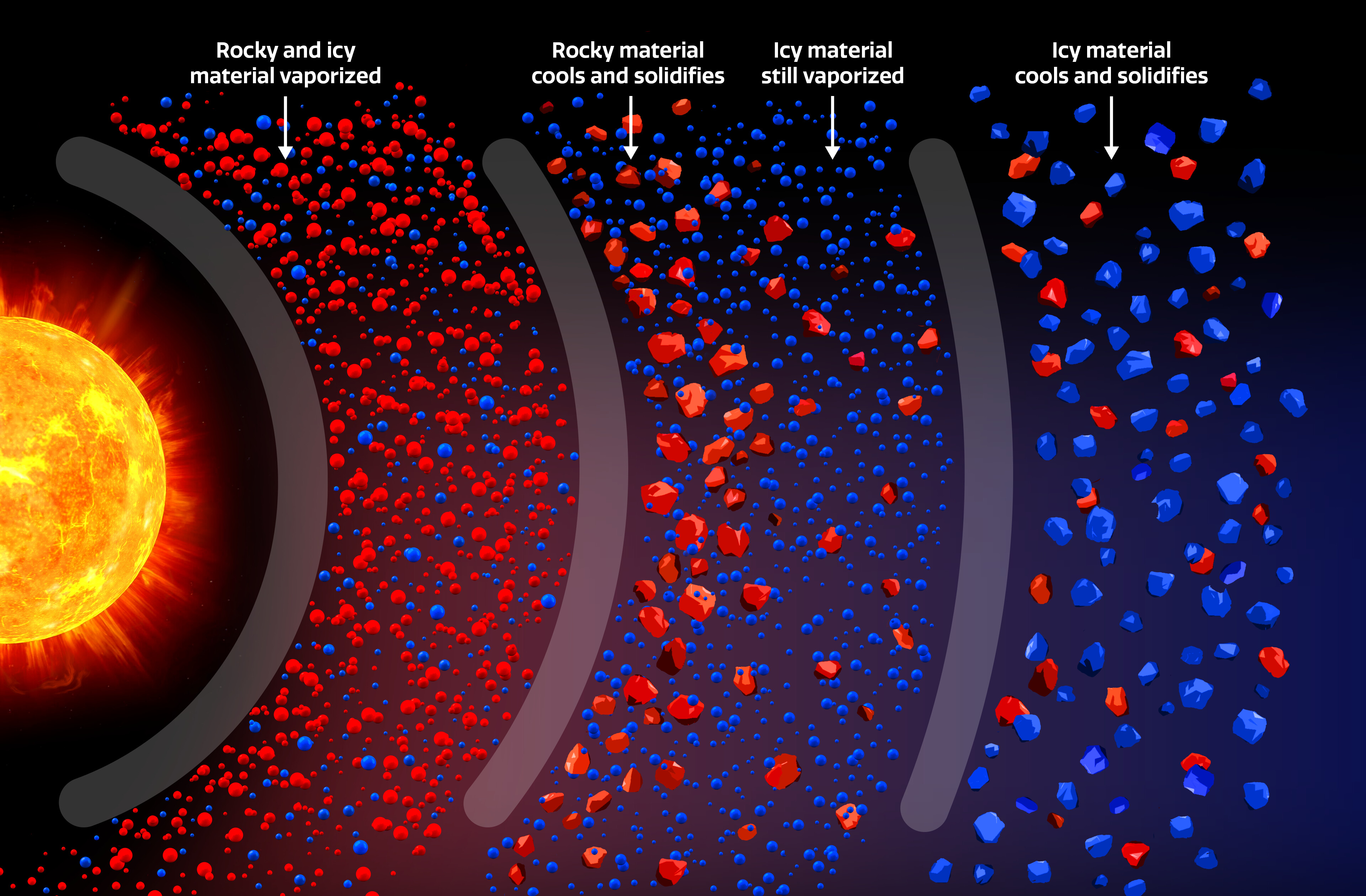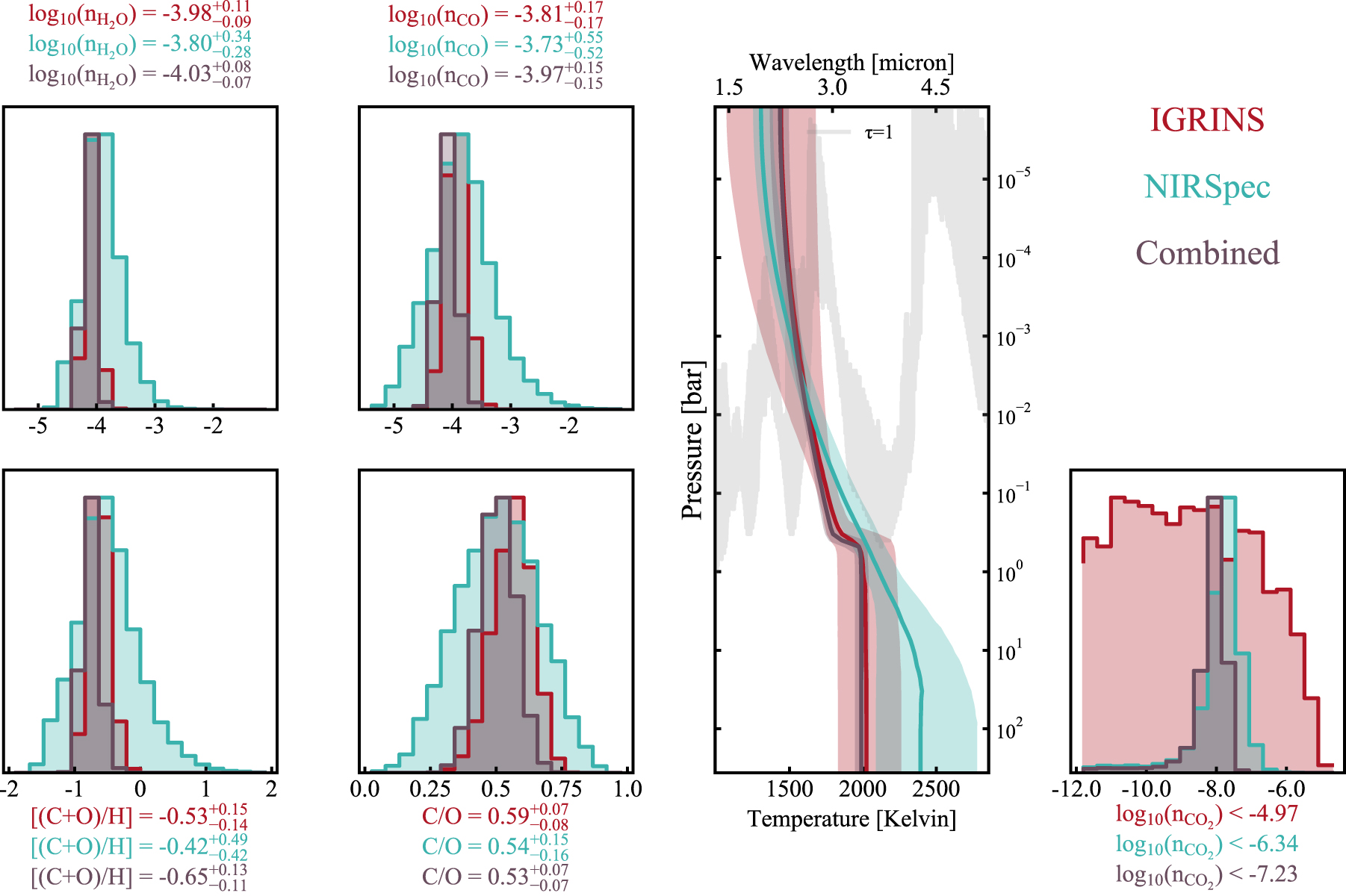Below are abstracts and links for my published papers. Additionally, I have several ongoing projects on a variety of research interests such as 3D atmospheric dynamics, hot-Neptunes, and development of telluric detrending techniques. Stay tuned!

Image Credit: NOIRLab/NSF/AURA/P. Marenfeld
A primary goal of exoplanet science is to measure the atmospheric composition of gas giants in order to infer their formation and migration histories. Common diagnostics for planet formation are the atmospheric metallicity ([M/H]) and the carbon-to-oxygen (C/O) ratio as measured through transit or emission spectroscopy. The C/O ratio in particular can be used to approximately place a planet's initial formation radius from the stellar host, but a given C/O ratio may not be unique to formation location. This degeneracy can be broken by combining measurements of both the C/O ratio and the atmospheric refractory-to-volatile ratio. We report the measurement of both quantities for the atmosphere of the canonical ultrahot Jupiter WASP-121 b using the high-resolution (R = 45,000) IGRINS instrument on Gemini South. Probing the planet's direct thermal emission in both pre- and post-secondary eclipse orbital phases, we infer that WASP-121 b has a significantly superstellar C/O ratio of and a moderately superstellar refractory-to-volatile ratio at stellar. This combination is most consistent with formation between the soot line and H2O snow line, but we cannot rule out formation between the H2O and CO snow lines or beyond the CO snow line. We also measure velocity offsets between H2O, CO, and OH, potentially an effect of chemical inhomogeneity on the planet dayside. This study highlights the ability to measure both C/O and refractory-to-volatile ratios via high-resolution spectroscopy in the near-IR H and K bands.

Ground-based high-resolution and space-based low-resolution spectroscopy are the two main avenues through which transiting exoplanet atmospheres are studied. Both methods provide unique strengths and shortcomings, and combining the two can be a powerful probe into an exoplanet's atmosphere. Within a joint atmospheric retrieval framework, we combined JWST NIRSpec/G395H secondary eclipse spectra and Gemini South/IGRINS pre- and post-eclipse thermal emission observations of the hot Jupiter WASP-77A b. Our inferences from the IGRINS and NIRSpec data sets are consistent with each other, and combining the two allows us to measure the gas abundances of H2O and CO, as well as the vertical thermal structure, with higher precision than either data set provided individually. We confirm WASP-77A b's subsolar metallicity ([(C+O)/H] = ‑0.61 +0.10−0.09) and solar C/O ratio (C/O = 0.57 +0.06−0.06). The two types of data are complementary, and our abundance inferences are mostly driven by the IGRINS data, while inference of the thermal structure is driven by the NIRSpec data. Our ability to draw inferences from the post-eclipse IGRINS data is highly sensitive to the number of singular values removed in the detrending process, potentially due to high and variable humidity. We also search for signatures for atmospheric dynamics in the IGRINS data and find that propagated ephemeris error can manifest as either an orbital eccentricity or a strong equatorial jet. Neither are detected when using more up-to-date ephemerides. However, we find moderate evidence of thermal inhomogeneity and measure a cooler nightside that presents itself in the later phases after secondary eclipse.